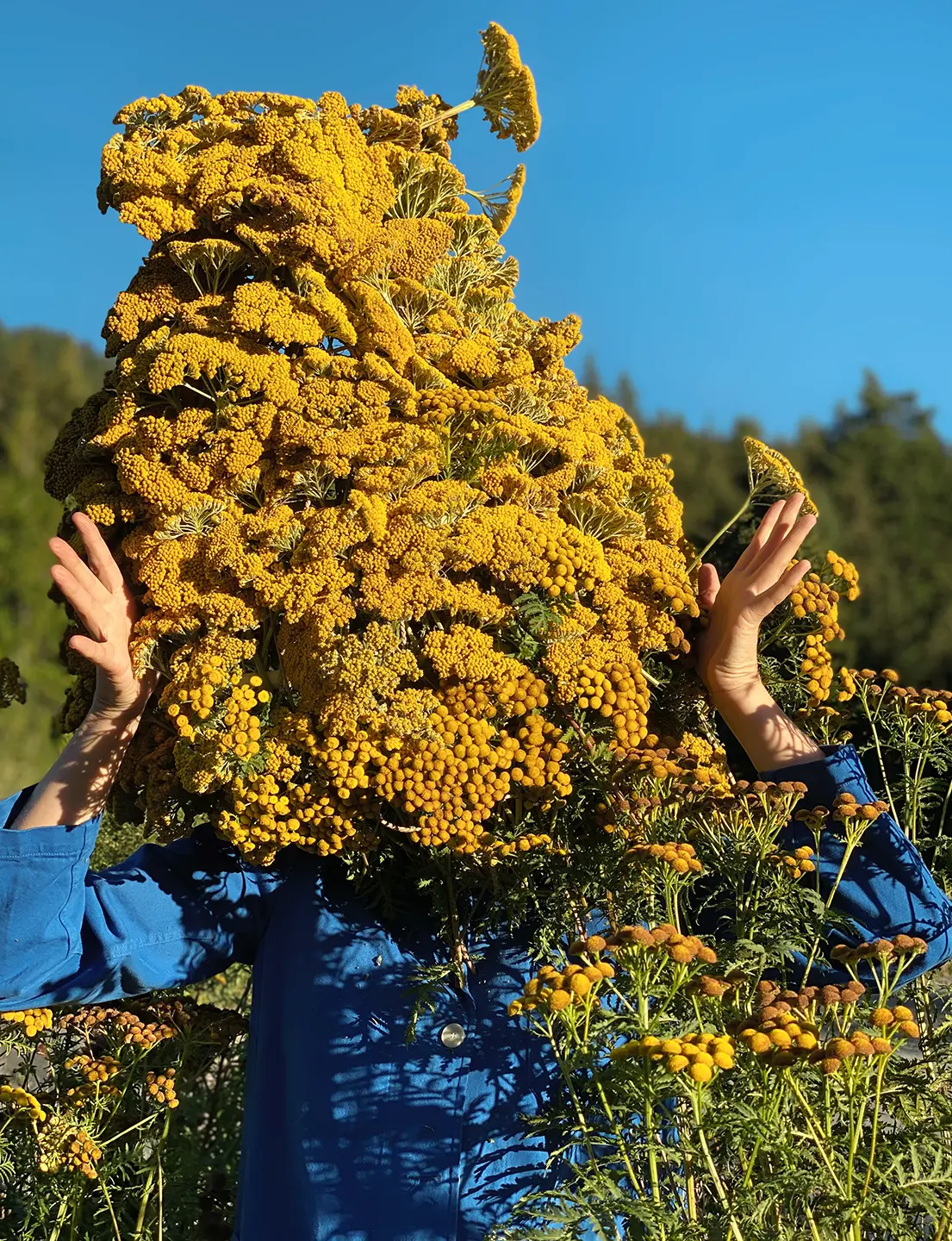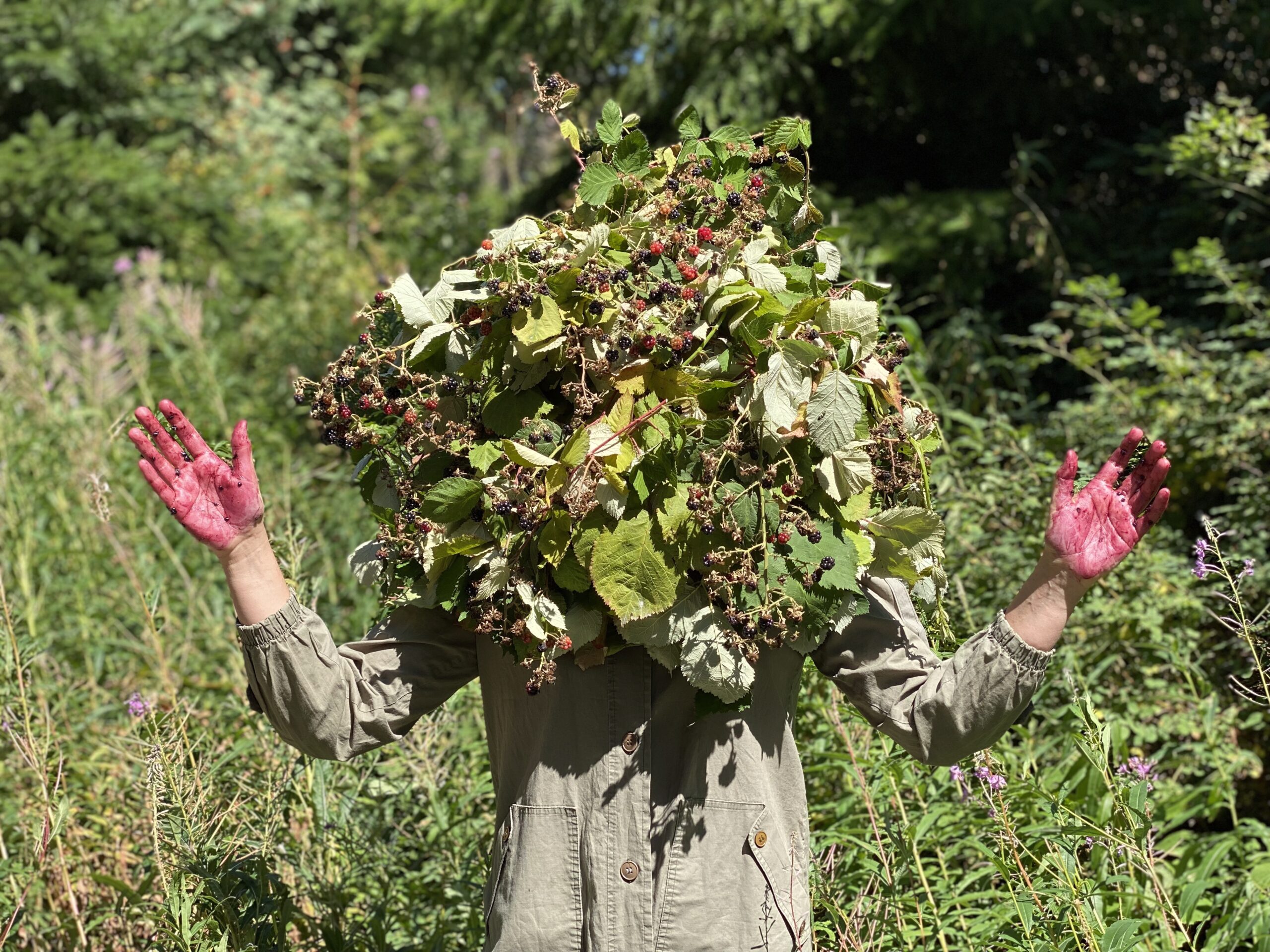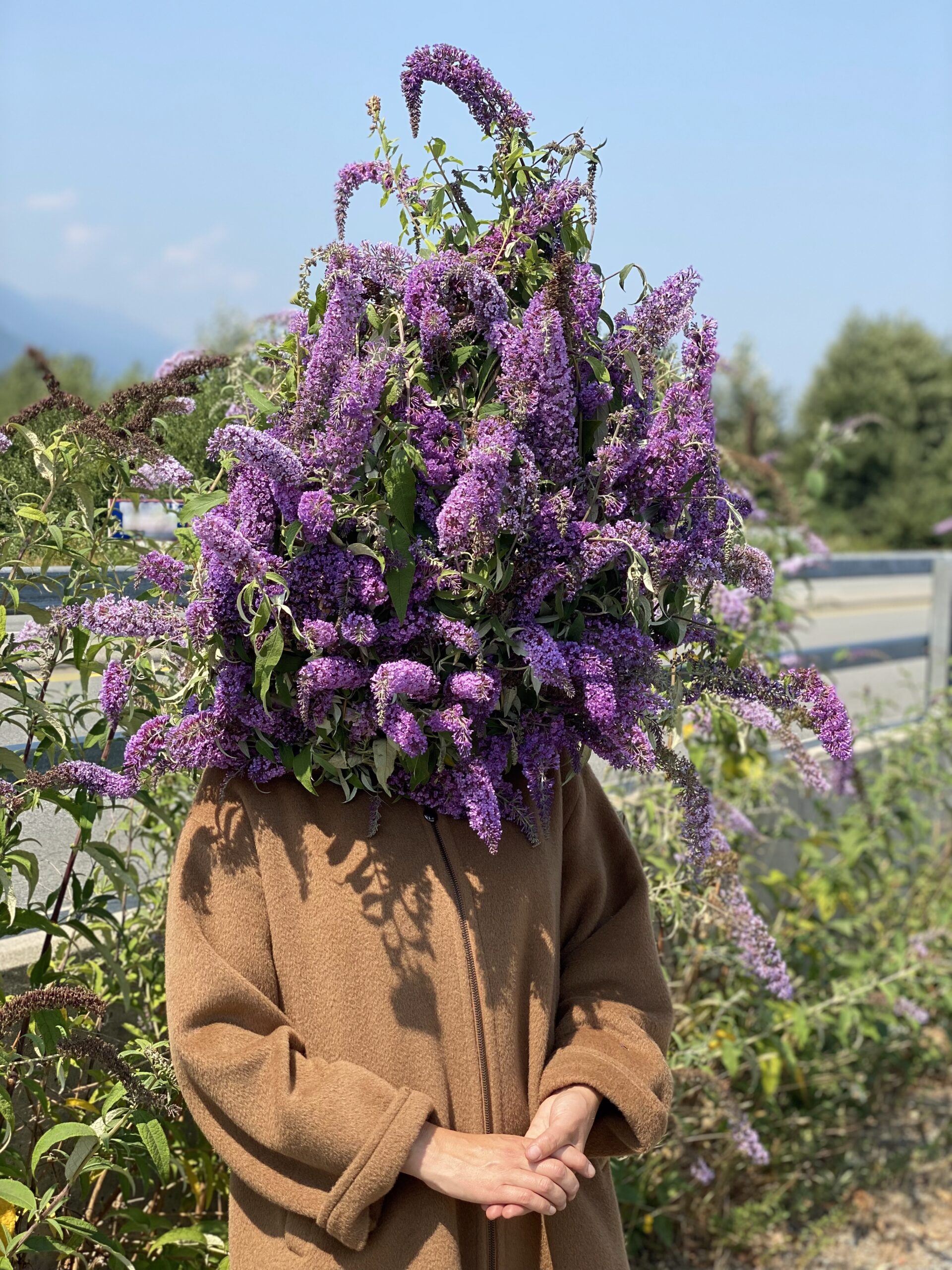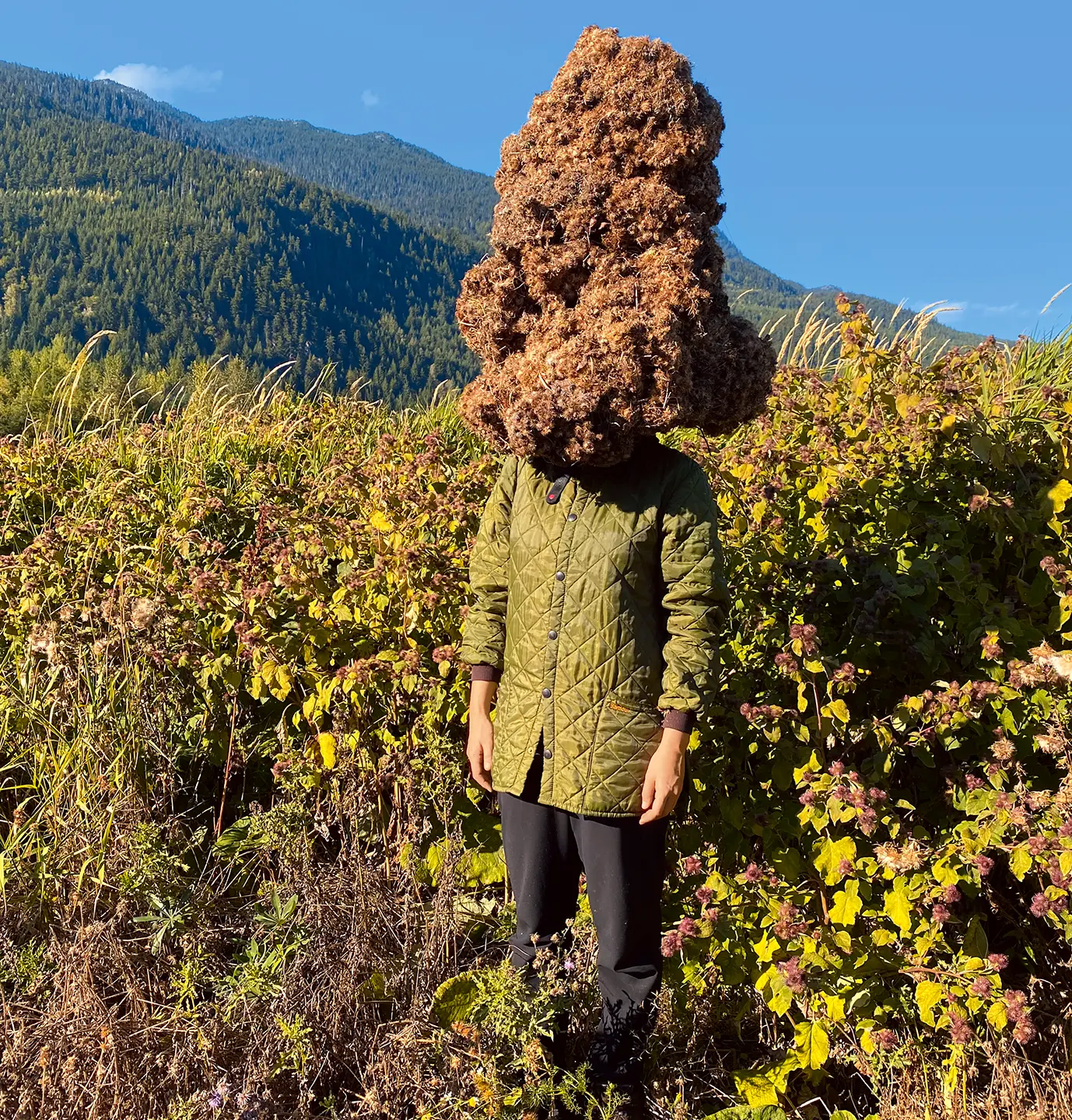Earlier this year while researching a story on Canada’s most endangered amphibian—the Oregon spotted frog, denizen of British Columbia’s Fraser Valley—I visited the Vancouver Aquarium’s conservation breeding program for the species. Entering a climate-controlled rooftop hut in which adults are housed, eggs incubated, and tadpoles raised for reintroduction, I was instructed to first step through a tray of pink liquid resembling windshield-washer fluid. This was Virkon, a broad-spectrum disinfectant that kills microorganisms lurking on footwear. Disease being a concern in any husbandry operation, the caution was warranted: in 2021, Greater Vancouver Zoo’s similar program lost half its female spotted frogs to chytrid, an invasive, highly pathogenic African fungus. With unwitting human help, chytrid has circled the globe, devastating native frog populations and driving some 90 species to extinction.
With B.C.’s remaining spotted-frog populations comprising a mere 280 adults, the boot-bathing prophylaxis was best-practice practical. But it was something else, as well: part of an emerging ethos that sees passengers on polar cruises vacuuming their clothing and similarly sloshing through Virkon before going ashore; recreationists throughout B.C. scrubbing down mountain bikes and brushing off shoes at trailheads; government border inspectors combing boat hulls for aquatic hitchhikers; billboards announcing the dangers of forest-destroying insects transported in firewood; and signage at ferry terminals, roadside pullouts, preserves, and parks detailing the latest invasive-species threats to local ecosystems—usually with an added plea for visitors to refrain from tipping out unwanted pets and plants.

That we carry on our persons microbes, spores, seeds, and eggs capable of igniting biological fires in the tinder of vulnerable ecosystems isn’t news. That we’ve finally become concerned enough about the prospect to mandate precautionary practices might be.
We introduce organisms to new environments on a near-constant basis (with respect to plants, there’s even a word for it—anthropochory), transported from far-flung locales through some combination—purposeful or accidental, legal or not so much—of concealment, transplantation, or surreptitious escape. Nevertheless, it remains a generally difficult task for the newcomers to establish—let alone join that subset of introduced species that become problematic and, by definition, invasive. That’s because healthy ecosystems are deeply integrated and highly resilient, with available niches at a premium and capacity to repel interlopers.
But here’s the thing: compromised ecosystems, a hallmark of human occupation, are very susceptible to invasion. Clearcuts, rights-of-way, vacant lots, and even backyards offer de facto Petri dishes for all manner of adaptively savvy, reproductively prolific, come-from-away generalists. Once established, such organisms insinuate into the local leitmotif, where shifting baseline syndrome—the assumption by each human generation that whatever environment it experiences has always been thus—ensures we no longer view them as novel. Think house sparrows begging crumbs at a Kitsilano coffee shop, grey squirrels cavorting in a Kerrisdale park, ivy creeping up building façades at UBC, cute bunnies ducking into thorny blackberry berms at Jericho Beach. Bereft of any idea of their nonnative nature, we are also blind to their impacts. Until, like sci-fi-movie aliens that assume human form, they uncloak themselves in some malign way.
No end of news reports document these reveals: introduced rats driving seabirds to extinction on oceanic islands; understory-gobbling deer prohibiting culturally important cedar from regenerating on Haida Gwaii; a carpet of tiny Ponto-Caspian mussels clogging water intakes around the Great Lakes; Burmese pythons eating anything left standing in the Florida Everglades; and here in the Lower Mainland, burns, blisters, and blindness from the powerful phytotoxins of giant hogweed.
Each example speaks to the singular irruptive quality of invasive species. By outcompeting, outbreeding, outspreading, and outoccupying native flora and fauna, they take over large areas. Sometimes partially, often completely. It’s more obvious with plants: lacking the physical motility of animals to expand their range, they do so through the slow explosion of rhizomes, suckers, and seeds. You know these monocultures when you see them—and they’re becoming more widespread.
Though most Canadians would recognize the Norway as a maple, they’d be hard-pressed to differentiate it from native species.
The combination of climate change and accelerating globalization in recent decades has not only turbocharged invasions but also increased their severity and extent. It’s a literal reimagining of the Earth’s surface, manifest in a global short list of cosmopolitan plants and animals. More prosaically, you now see the same birds and weeds whether you’re in Copenhagen, Tokyo, Miami, or Sydney.

If this seems a lot to wrap your mind around, don’t worry—it has already happened. These organisms have been not only physically relocated but have infiltrated the public psyche, institutions, art, and technology in their new homes (e.g., electrical boxes in Vancouver unknowingly painted with English ivy murals; drones and AI employed to combat Phragmites, the European reed that has blocked waterways across Eastern Canada). In confronting their spread, invasives have also delivered cause for community, as with Stanley Park’s stalwart “ivy busters,” Vancouver Island’s annual “broom bashes,” and the “banish burdock” crew I run with in Whistler. Four years into a book project on the subject, I realized it wasn’t just a planet being transformed, but ourselves.
Norway maple offers an example. Imported to North America in the 18th century, this comely species took off across the northeast through speedy growth and prolific seed set, crowding out indigenous tree species, particularly in the limited green spaces of cities. This conquest was aided in Canada by the maple leaf’s gradual adoption as a national symbol (our country’s first anthem, “The Maple Leaf Forever,” was penned in 1867, the year Canada was created. Coins also featured the maple leaf starting in the 1850s). Though most Canadians would recognize the Norway as a maple, they’d be hard-pressed to differentiate it from native species like sugar, black, or red maple—the reason it now occupies not only physical but cultural pieds-à-terre, its leaf unknowingly included in the logos of universities, events, and organizations—including, ironically, the Alliance of Natural History Museums of Canada. Canadians were polite enough about such affronts—until the leaf turned up on a new polymer $20 bill issued in 2013. To counter swift reaction from botanists who recognized an invasive species gracing the national currency, the Bank of Canada proclaimed its graphic a composite of all Canadian maples. Though botanists weren’t buying it, there would be no more concessions to science: by 2022, some three billion Canadian banknotes of every denomination paid inadvertent homage to the Norway maple’s ability to claim space in both city ravines and the national consciousness.
And then there’s Japanese knotweed, the plant that ate the world. Once upon a time, knotweed was just another leafy perennial competing for space along riverbanks and forest edges in the Orient. Early cultivators, however, noted that freed of natural checks and balances, this pleasingly fluorescent “false bamboo” grew with unparalleled robustness pretty much anywhere—mostly because, like an iceberg, its concrete-cracking root mass was larger and more energetic than what was visible above ground. Somehow, no one flagged this as a problem.
At some point while posted in Japan from 1823 to 1829, the physician, naturalist, and explorer Philipp Franz von Siebold obtained a potted knotweed. Carted back to the Netherlands, the plant earned a gold medal from the Society of Agriculture & Horticulture at Utrecht for the most interesting new ornamental plant of the year. Leveraging this celebrity, plant catalogues soon attributed knotweed with an extensive list of curative and utilitarian properties, one of which would be vilified by time: its “inextirpable” nature. Despite the havoc it eventually wrought, Britain’s own introduction to knotweed was inauspicious: a single female clone donated by Siebold to the Royal Botanic Gardens at Kew. Passed to commercial nurseries and private estates by exotic-plant-crazed Victorians, knotweed would escape all confines across the United Kingdom to form dense, infrastructure-compromising stands that, as advertised, seemed impossible to remove.

When the public demanded action, a duty of care was placed on knotweed disposal under Britain’s 1990 Environmental Protection Act, birthing a nationwide industry of chemical and mechanical warfare, exemplar of a hidden but burgeoning global economy in invasive management. The 2012 London Olympics, for example, absorbed knotweed-removal costs totalling £70 million. Expensive, yes, but a mere hint of invasives’ true price to society, which a recent study pegs at over $2.2 trillion worldwide since 1960.
A tiny fraction of this red ink may be mitigated when invasives are consumed, a practice known as invasivory. George Cera, a bounty hunter I spent time with, removed perniciously invasive Central American spiny-tailed iguanas from a Florida community at $20 a head. After dispatching some 13,000 of the beasts, he was flush enough to pen a call-to-arms cookbook in his spare time: Save Florida Eat an Iguana. Between recipes for iguana tacos, curried iguana, and smoked iguana pizza, Cera also wrote of our ecological responsibility to reverse self-inflicted invasive species problems. His arguments were persuasive—and, I’ll attest, delicious.
Cera isn’t alone. I’ve met Vancouver Islanders who feast on the legs of out-of-control American bullfrogs, prepared in much the same way as the chicken wings they taste like. Prolific Asian carps, representing 95 per cent of fish biomass in some U.S. Midwest waters, are churned into fertilizer, animal feed, and even human fare under the consumer-friendly label Copi (from copious). Garlic mustard, a European pot herb turned scourge of Southern Ontario forests, is extremely tasty. Some Squamish friends forage invasive burdock root and also pickle the fresh, asparagus-like shoots of young knotweed. And is there even one among us who hasn’t sampled a luscious, twilight-coloured orb from the apocalypse of Himalayan blackberry blanketing the Lower Mainland—let alone bucket home enough for a pie?
Whether you are an ivy-buster or invasivore, author or artist, invasive-species awareness ultimately changes your relationship with them. Organisms that succeed solely by dint of evolutionary prowess and the opportunities we’ve delivered them deserve grudging respect—even if you can’t enjoy seeing them occupy vast areas to the exclusion of what you know should be there. That feeling is solastalgia, a word that describes the negative impact of sudden environmental shifts on an individual’s sense of place. As opposed to nostalgia—the melancholia experienced over a former time or locale—solastalgia is the discomfort of change that overwhelms in the moment.
A discomfort we’ve become oddly used to.
Read more from our Autumn 2025 issue.









